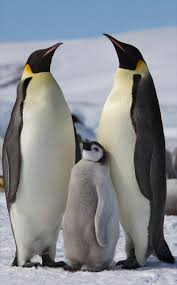Penguins
Intro
Penguins are some of the most fascinating creatures on Earth, well-known for their upright stance, tuxedo-like appearance, and unique adaptations to extreme environments. Belonging to the family Spheniscidae, these birds are flightless, yet they are among the most skilled swimmers in the animal kingdom. With around eighteen distinct species ranging in size from the tiny Little Blue Penguin, standing barely a foot tall, to the Emperor Penguin, which can reach up to four feet in height, penguins display remarkable diversity while sharing many common traits.
Habitat and Distribution
Contrary to popular belief, not all penguins live in the frozen expanses of Antarctica. While many species do thrive in polar regions, others inhabit more temperate climates. For example, the Galápagos penguin lives near the equator, relying on cool ocean currents to survive. Regardless of location, penguins are perfectly adapted to life in the water. Their bodies are streamlined like torpedoes, and their strong flippers allow them to reach impressive swimming speeds of up to fifteen miles per hour. Penguins also possess short, dense, waterproof feathers that insulate them against cold waters. In addition, their striking black-and-white coloring serves as camouflage: dark backs blend with the ocean depths when seen from above, while white bellies blend with the bright surface when viewed from below.
Diet and Behavior
Diet and behavior further reveal penguins’ specialization as marine hunters. They primarily feed on fish, squid, and krill, catching their prey with sharp beaks and muscular tongues designed to grip slippery food. However, life in the ocean is not without danger. Penguins must remain vigilant against predators such as leopard seals, sea lions, and orcas. On land, eggs and chicks face threats from predatory birds like skuas. To survive, penguins depend not only on their physical adaptations but also on their strong social behaviors. Colonies are often crowded, yet penguins use distinctive vocalizations and body signals to recognize their mates and offspring among thousands of individuals.
Breeding and Parenting
One of the most remarkable aspects of penguin life is their breeding and parenting strategies. Many species form long-term partnerships, reuniting with the same mate each year. Nesting habits vary widely: some penguins dig burrows, others construct nests from stones, and the Emperor Penguin, uniquely, balances its egg on its feet, covering it with a flap of skin to keep it warm during the brutal Antarctic winter. Parental care is usually shared, with both mother and father taking turns incubating eggs and feeding chicks. Their cooperation and endurance are essential for the survival of the next generation.
Fun facts and Adaptations
Beyond their scientific significance, penguins captivate human imagination with their quirky behaviors. They often “toboggan” across ice by sliding on their bellies to conserve energy. They are also capable of drinking seawater, thanks to specialized glands that filter out excess salt. These small but remarkable details highlight how perfectly suited penguins are to their environments.
conclusion
In conclusion, penguins are much more than comical birds waddling across the ice. They are highly adapted, resilient, and cooperative creatures that thrive in some of the harshest conditions on Earth. From their streamlined bodies to their devoted parenting, penguins demonstrate the incredible diversity and adaptability of life. Studying them not only enriches our understanding of biology and ecology but also reminds us of the beauty and resilience found in the natural world.

Penguin family